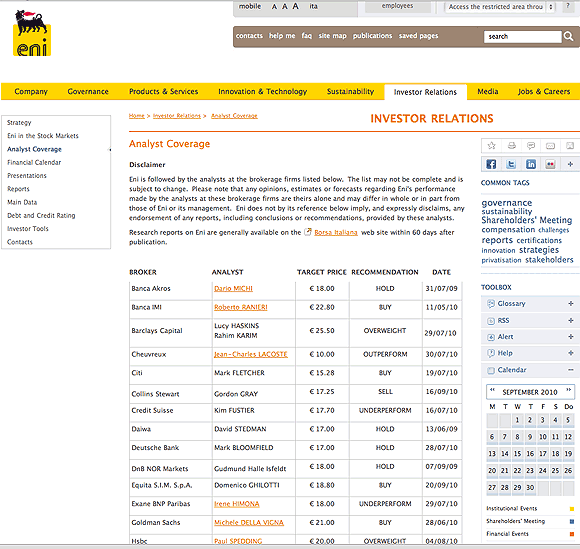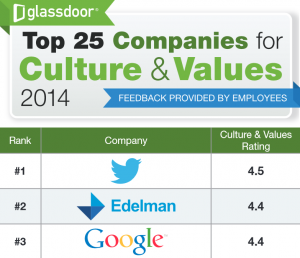
Who follows your company, what firm they work for and their recommendations concerning the company’s stock are all valuable pieces of information readily available to a company, but less so to individual investors. So it’s surprising that many companies do not include such information on their websites. And the information to be gleaned is not just that the consensus opinion is buy, sell or hold; much more can be teased out for the benefit of the diligent investor.
Take for example, the number of analysts that cover the company. The more analysts that cover a stock, the better chance the stock is highly liquid, with a broad base of interested institutional buyers and sellers.
Also of interest to a discerning investor is the type and quality of the research shops that cover the stock. If the company is followed mostly by investment research houses you recognize and respect, this is a good thing. If on the other hand, the bulk of coverage comes from firms you’ve never heard of, warning flags should pop up. It’s not that there aren’t good boutique research shops out there, rather that if that’s all that covers the company, it could indicate a lack of institutional interest and hence liquidity in the stock.
Finally, the research analyst’s recommendation is a useful piece of information, but one that should be treated with caution. I know at least one old sage of Wall Street that thinks that a uniform “Buy” consensus on a stock is a good reason to sell. Others say that when everyone thinks a stock is a Buy means that most of the profits have already occurred.
Regardless of how you choose to interpret the data, the information is useful in making investment decisions and effective investor relations sites should include it. Set out below is a good example of information to include on such a page from the website of ENI, the Italian energy company.

In this series:
Previous post: Contacts
Next post: Context
Lucy is Editor at Corporate Eye


